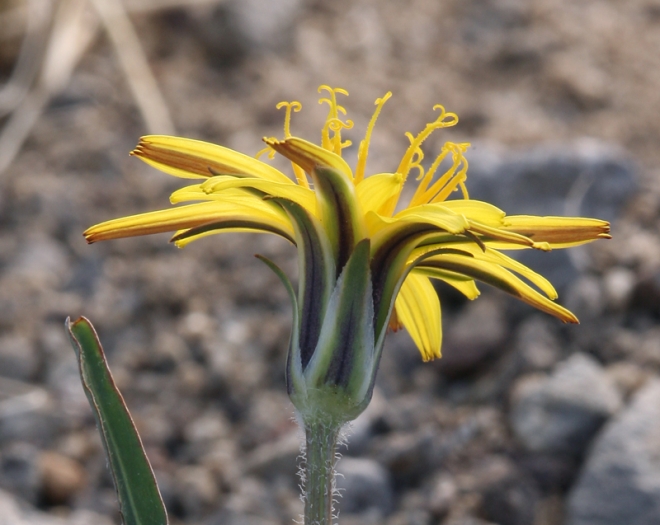Steppe Agoseris
(Agoseris parviflora)
Steppe Agoseris (Agoseris parviflora)
/
/

Steve Matson
CC BY 4.0
Image By:
Steve Matson
Recorded By:
Copyright:
CC BY 4.0
Copyright Notice:
Photo by: Steve Matson | License Type: CC BY 4.0 | License URL: http://creativecommons.org/licenses/by/4.0/ | Rights Holder: Steve Matson | Publisher: iNaturalist | Date Created: 2006-06-24T08:24:01-07:00 |
























Estimated Native Range
Summary
Agoseris parviflora, commonly known as Steppe agoseris or false dandelion, is a perennial herb native to the arid and semi-arid regions of the Great Basin, the Colorado River drainage, and extending into the states of Wyoming, Colorado, and New Mexico. It is typically found in open areas such as grasslands, meadows, and sagebrush steppe ecosystems. This plant forms a basal rosette of narrow, lance-shaped leaves and produces a single flower head on a leafless stalk that can reach up to 12 inches in height. The flower head contains bright yellow ray florets that bloom from late spring to early summer and are moderately showy, resembling the common dandelion.
Steppe agoseris is valued for its drought tolerance and ability to thrive in poor, sandy, and gravelly soils, making it an excellent choice for xeriscaping and naturalized areas. It requires minimal maintenance and is often used in restoration projects to stabilize soils and support native pollinators. In cultivation, it prefers full sun to part shade and requires well-drained soils. While generally disease-free, it can occasionally be affected by root rot if grown in poorly drained conditions.CC BY-SA 4.0
Steppe agoseris is valued for its drought tolerance and ability to thrive in poor, sandy, and gravelly soils, making it an excellent choice for xeriscaping and naturalized areas. It requires minimal maintenance and is often used in restoration projects to stabilize soils and support native pollinators. In cultivation, it prefers full sun to part shade and requires well-drained soils. While generally disease-free, it can occasionally be affected by root rot if grown in poorly drained conditions.CC BY-SA 4.0
Plant Description
- Plant Type: Herb
- Height: 0.1-1 feet
- Width: 0.5-1 feet
- Growth Rate: Moderate
- Flower Color: Yellow
- Flowering Season: Spring, Summer
- Leaf Retention: Deciduous
Growth Requirements
- Sun: Full Sun, Part Shade
- Water: Medium
- Drainage: Medium
Common Uses
Bee Garden, Low Maintenance
Natural Habitat
Native to arid and semi-arid regions of the Great Basin, grasslands, meadows, and sagebrush steppe ecosystems
Other Names
Common Names: Smallflower Agoseris, Small-flowered False Dandelion
Scientific Names: , Agoseris parviflora, Agoseris caudata, Agoseris dens, Agoseris dens-leonis, Agoseris glauca var. laciniata, Agoseris glauca var. laciniata, Agoseris glauca var. parviflora, Agoseris leontodon, Agoseris leontodon var. leontodon
GBIF Accepted Name: